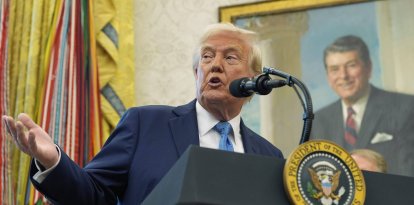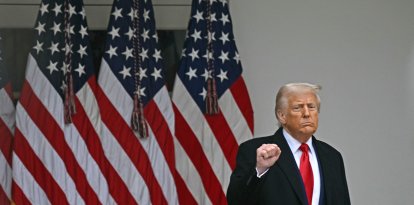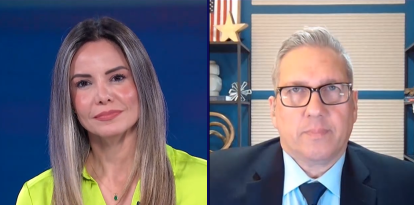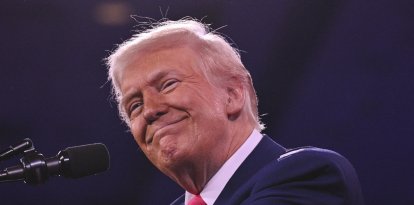Analysis
Is Henry Clay a historical model for Trump? The American system and tariffs
Some 200 years apart, both used the same trade practice—one with a more holistic approach and the other with a more transactional and tactical idea.

President Trump and Henry Clay
"Are we doomed to behold our industry languish and decay yet more and more? We must naturalize the arts in our country, and we must naturalize them by the only means which the wisdom of nations has yet discovered to be effectual: by adequate protection against the otherwise overwhelming influence of foreigners." Although this phrase came out of Donald Trump's mouth in his recent speech during Liberation Day, it turns out that these words are nearly 200 years old. They were uttered by Henry Clay, one of the most influential members of Congress in the 19th century.
Clay, who served as secretary of state, senator, and even speaker of the House of Representatives, created what became known as the American System, a comprehensive plan with three main objectives: to revive the economy, trade and infrastructure throughout the country.
Although his plan was hatched and half-heartedly implemented in the years following the War of 1812, which pitted the fledgling United States against the United Kingdom, it came back into prominence last Wednesday, April 2, when President Trump announced reciprocal tariffs.
Despite losing three presidential elections, Clay's impact and charisma made him one of the most influential politicians of his time, as well as a character many historians found fascinating.
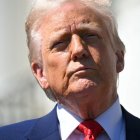
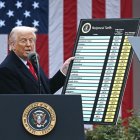
Politics
Trump pausa los aranceles recíprocos a más de 75 países y sube los de China al 125%
Santiago Ospital
"Now charming, now badgering; now beseeching, now deprecating; now subdued, now vehement—were legendary, and who, if he did not command assent by the strength of his views, won it with his captivating manner and seductive voice," historian Merrill Peterson wrote.
Even Abraham Lincoln described Clay as his "beau ideal of a statesman."
Despite not being known for being the most ideological, President Trump has repeatedly praised former President William McKinley for his tariffs, even referring to the word "tariff" as "one of the most beautiful." In his historical review of U.S. trade policy, Clay's work may have something to do with his tariff strategy.
Henry Clay's American System
There is a phrase that asserts that "every decision is a product of its time." In this case, Clay's plan was thought up immediately after the war with the British. His main objective? To end America's heavy dependence on imports, primarily those from the United Kingdom, to force the U.S. to rely more on itself.
The goal was to turn a group of zoned agricultural states strongly tied to the British manufacturing colossus into a unified, dynamic, industrial economy. Clay christened his creation the American System and divided it into three parts:
- Protecting domestic industry from imported products by imposing tariffs.
- Stimulate the economy by establishing the Second Bank of the United States.
- Use tariff revenues to improve the country's transportation system, including roads, bridges and canals. Thus making it easier for farmers and manufacturers to access markets.
The idea of a second nationwide bank to facilitate access to credit and promote investments was eventually created in 1816; however, President Andrew Jackson eliminated it decades later.
On transportation and market access, the United States was rapidly expanding westward, but this expansion required roads, canals and bridges, the construction of which Clay said should be a priority. This infrastructure would then connect the new regions to the economic centers of the east, facilitating trade and mobility.
Although the plan was never fully implemented, only piecemeal and alternately over the years, Clay oversaw the passage of tariffs in the House of Representatives.
The Tariffs of 1816: The beginning of U.S. protectionism
Historically, tariffs have had three possible objectives: to generate extra revenue, reciprocity, and protection of domestic industries. The Tariffs of 1816, also called the "Dallas Tariffs" after then-Secretary of the Treasury Alexander J. Dallas, were the first tariffs passed by Congress with the explicit function of protecting American-manufactured goods from foreign competition.
As many new industries sprang up during the war, they were now at risk of being destroyed by the flood of British products entering the country, which put the nationalists of the time on the offensive.
It was passed with Clay as speaker of the House and consisted of a 25% tax on all wool and cotton products imported into the United States ffrom abroad, subsequently contributing to the budget surplus. The tariff also included protections for iron, glass, paper and other manufactures. Many Southern leaders, including future Vice President John C. Calhoun, supported this tariff.
"It is not free trade that they recommend...it is, in effect, the British colonial system...which would again reduce us to commercial dependence on Great Britain. (...) Since July 4, 1789...protection of manufacturing has been a cornerstone of the system. It was supported by Washington, Jefferson and Hamilton," Clay asserted about these tariffs in a famous speech he delivered years later in 1832.
"The domestic industry nourishing the foreign trade, and the foreign commerce, nourishing the domestic indust"
Also, with Clay as speaker of the House, Congress passed the tariffs of 1824, in this case despite opposition from the South. Unlike in the movies, this second installment was much stronger than the first.
It set higher tariffs to further robust domestic industry, specifically wool, cotton, iron, glass, paper, leather and processed agricultural products.
According to Clay, the results of this tariff were successful. "If the term of seven years were to be selected of the greatest prosperity... it would be exactly that period of seven years which immediately followed the passage of the tariff of 1824. (...) The domestic industry nourishing the foreign trade, and the foreign commerce, in turn, nourishing the domestic industry," he noted in the 1832 speech.
This tariff did not generate Southern sympathy. They charged that it benefited the North at their expense.
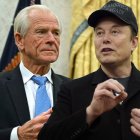

Politics
"He ain’t built s**t out of it": Elon Musk lashes out at Peter Navarro for his comments on Trump's tariffs
Luis Francisco Orozco
Trump and Clayy, two tariff visions
When looking for similarities between Trump and Clay's American System, both pushed for tariffs, claiming the need to protect U.S. industry. However, the current president also outlined the other two arguments: reciprocity and income.
This rhetoric succeeded in winning the support of the country's industrial zones. Just as the industrial north and emerging west backed Clay, Trump's rhetoric led him to win the entirety of the "Rust Belt" in the presidential election.
In turn, beyond the historical context of the two, the main difference is the tariff approach. While Clay's vision was more comprehensive, ideological and systemic, Trump's is more transactional and tactical. That is, while the former Kentucky senator employed tariffs with a romantic, developmentalist vision, Trump employed them mostly as part of a strategy to renegotiate the global trade order.
Did Trump ever mention Clay?
Indeed, he did on March 20, 2017, while giving a speech in Louisville, Kentucky. The Republican president praised his economic philosophy and described him as ahead of his time, in terms of business practices.
"Henry Clay believed in what he called the 'American system,' and proposed tariffs to protect American industry and finance American infrastructure. Like Henry Clay, we want to put our own people to work... Clay was a fierce advocate for American manufacturing. He knew all the way back, early 1800s, Clay said that trade must be fair, equal, and reciprocal. Boom," Trump said at the time.
RECOMMENDATION

